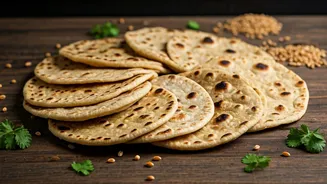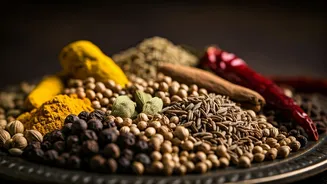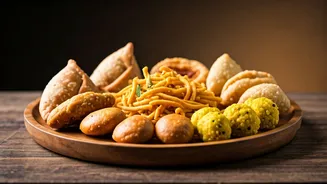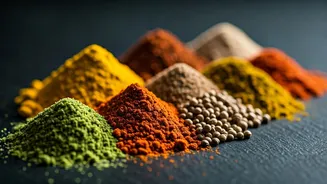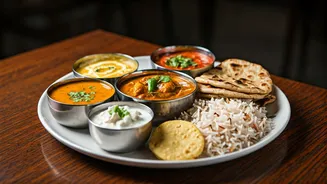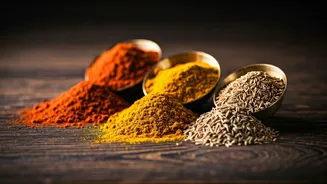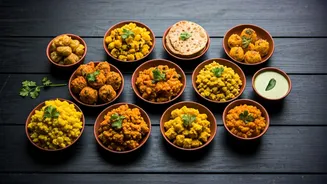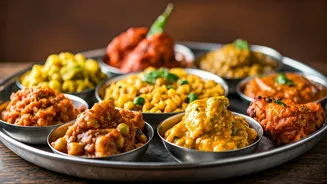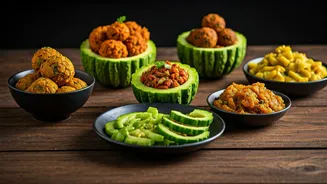Chapati Introduction
Chapatis, a quintessential component of the Indian diet, are flatbreads typically crafted from whole wheat flour, also known as atta. Their significance
in Indian cuisine is undeniable, playing a pivotal role in the nation's culinary culture. Beyond their role as a simple food item, chapatis have a rich history rooted in tradition. Each type varies based on ingredients and method of preparation, which affects both their flavor and nutritional profile. Understanding the various kinds of chapatis and their nutritional compositions enriches our appreciation of Indian cuisine's diversity and health implications. These flatbreads are not just fuel; they are a flavorful canvas mirroring the country's varied regions, ingredients, and customs. The ingredients used and the way these flatbreads are prepared vary across regions, contributing to the richness and variety of Indian cuisine. These flatbreads are a symbol of simplicity and sustenance, representing the culinary heritage of India.
Whole Wheat Chapati
Whole wheat chapatis stand as the most common variety, forming a staple in many Indian households. Produced using whole wheat flour (atta), they are known for their simplicity and balanced nutritional value. The process starts by mixing the atta with water to form a soft dough, followed by the flattening of small portions. These are then cooked over a heated griddle or directly on an open flame. Whole wheat chapatis offer a substantial amount of fiber, which helps in digestion and maintains blood sugar levels. They are a good source of complex carbohydrates, which provides sustained energy. The presence of essential nutrients such as iron, magnesium, and selenium also makes them a healthy dietary choice. These chapatis are celebrated for their simple preparation and versatility, pairing well with diverse dishes.
Bajra Chapati
Bajra chapati, made from pearl millet flour (bajra), is prominent in the cuisine of Rajasthan and Gujarat. The flour imparts a slightly nutty flavor and a coarse texture. To prepare it, bajra flour is mixed with hot water and kneaded to produce a soft dough. This dough is then flattened into round shapes and cooked on a griddle. Bajra chapatis are known for their high fiber content, which promotes digestive health. They are a good source of minerals like magnesium, manganese, and phosphorus. These chapatis are particularly beneficial in the cold season because of their warming properties. They are often served with various curries and vegetables, providing a wholesome and satisfying meal.
Jowar Chapati
Jowar chapati, crafted from sorghum flour (jowar), is another popular flatbread in several parts of India, especially Maharashtra and Karnataka. Sorghum flour adds a slightly sweet flavor and a soft texture to the chapati. These chapatis are prepared similarly to whole wheat versions, by kneading flour with water, and then rolling and cooking on a griddle. Jowar chapatis are highly nutritious, providing ample amounts of fiber, iron, and other essential nutrients. They are beneficial for people with gluten sensitivities, as jowar is naturally gluten-free. It can be paired well with various Indian dishes and is considered a healthy alternative to wheat-based chapatis.
Multigrain Chapati
Multigrain chapatis offer a nutritious upgrade, blending different grains like wheat, oats, barley, and others. The combination of varied flours gives a complex flavor and enhanced nutritional benefits. The creation of these chapatis starts with mixing the various flours with water to form the dough. It is then rolled out and cooked on a griddle. These chapatis are a great source of fiber and also provide a mix of vitamins and minerals not present in single-grain chapatis. The diverse combination of grains offers a range of textures and flavors. This option caters to those seeking enhanced health benefits and greater variety in their diet. They easily complement a range of dishes.
Ragi Chapati
Ragi chapati is made from finger millet flour (ragi), a grain extensively used in South Indian cuisine. Ragi flour provides a distinctive earthy flavor and is rich in nutrients. Preparation involves mixing ragi flour with water to produce a dough. This dough is then flattened and cooked on a griddle. Ragi chapatis are notable for their high calcium content, which supports bone health. They are also a good source of fiber and iron. These chapatis are a gluten-free choice, making them a suitable alternative for those with gluten sensitivities. The flavor and nutritional benefits make them a healthy addition to any meal.
Besan Chapati
Besan chapati, made from gram flour (besan), is known for its protein content and distinct flavor. Gram flour, derived from chickpeas, creates a flavorful and textured flatbread. Making besan chapatis involves combining besan with water and spices to form a dough, which is then rolled out and cooked on a griddle. Besan chapatis are a good source of protein, essential for muscle repair and growth. They are rich in fiber and provide sustained energy. The inclusion of besan makes them a beneficial option for those looking to increase their protein intake. They offer a unique, savory taste and pair well with various vegetarian dishes.
Thepla
Thepla, particularly enjoyed in Gujarati cuisine, is a spiced version of the chapati, often made with added ingredients like spices, herbs, and sometimes vegetables. The dough incorporates ingredients like spices (turmeric, chili powder), herbs (fenugreek leaves), and sometimes mashed vegetables. The mixture is then rolled and cooked on a griddle. Thepla offers a vibrant flavor profile and may also contain added nutrients depending on the ingredients used. It is an excellent choice for travel, as it remains fresh for a few days. Thepla adds variety to the diet and is especially favored during journeys and picnics because of its ease of preparation and rich taste.
Rumali Roti
Rumali Roti, a thinner and softer flatbread, is frequently seen in North Indian cuisine, with the name translating to 'handkerchief bread' due to its delicate texture. It is made from a combination of wheat flour and all-purpose flour. The preparation involves mixing the flours with water and a bit of oil, creating a pliable dough that is then stretched very thinly and cooked on an inverted griddle. Rumali roti is known for its light texture, making it ideal for wrapping and scooping up sauces and curries. It offers a subtle flavor and complements rich, flavorful dishes. Because of its light texture and delicate flavors, it is a favored choice with Mughlai and North Indian meals.
